I first came to Costa Rica in 2001. My boutique mergers and acquisitions advisory firm, Live Oak Capital Advisors, had been hired by a for-profit private university, located in the part of the gran area metropolitana, or GAM, known as Heredia, to find a strategic buyer. Little did I know at the time that this deal would change the direction of my life. Yes, we sold the university after two years of hard work. And I found myself in a new home.
I settled in the San Jose, central valley, area for the ensuing 10 years, thinking that was the best place for a serious entrepreneur to be. I started a vacation package business that frequently required that I travel to diverse areas of the country. In that 10 year period, I became very familiar with just about every nook and cranny of Costa Rica.
I would often travel to the southern zone. Back then the now pristinely paved Costanera, as we call the coastal highway that extends from Puntarenas to Palmar Norte, had a curious unpaved stretch of road from the town of Quepos to Playa Dominical. That stretch of road was notorious for being one of Costa Rica’s worse. The distance was small, only about 44 kilometers, but the travel times could extend up to 1.5 or 2 hours. This dirt road was so bad that you could literally disappear in a rain-water filled pot hole and never be found again!
Finally having my fill of life in the big city, I moved to the southern zone, settling in the town of San Isidro de El General, in the canton of Perez Zeledon, in 2010. And I’ve never been happier.
I am now a member of the Coldwell Banker Vesta Group real estate team in Dominical. I am fully convinced that Costa Rica’s southern zone currently presents the best opportunities for real estate investing and developing in the country. Here are 10 reason why, in random order.
1. Infrastructure
We’ve come a long way since that infamous road described above. Now it’s pleasantly paved. In fact, the entire Costanera is one of Costa Rica’s proudest infrastructure accomplishments. These days, especially with the new highway that connects San Jose to the Pacific Coast, the Caldera Highway, you can zip down from San Jose to Playa Dominical in as short as 3 hours time. Moreover, the road from Dominical up the mountain to San Isidro, which once was also notoriously bad, is now kept in very good condition. I would rate most of the roads, main ones and otherwise, in the Costa Rica southern zone, as some of the country’s best.
By the way, there are two routes to the southern zone. One the aforementioned coastal route, via the Costanera. However, one can also take the Panamericana, via route 2, over Cerro de la Muerte and down into the Valle General. The route is actually shorter, but can be a bit stressful due to weather conditions and mountainous terrain. Nevertheless, on clear days the mountain route offers some breathtaking panoramic views. Having two beautiful routes means folks never get bored traveling by land to the Costa Rica southern zone.
There are also numerous airports to fly into via domestic flights from San Jose, such as the ones in Quepos, San Isidro, Sierpe, Puerto Jiminez, and Drake Bay.
2. Untouched Natural Beauty
Many areas of Costa Rica have seen a lot of development, in fact, perhaps, too much. The southern zone has so far escaped the onslaught. What you see when you arrive is green, a vast sea of green mountains, lush jungles and gorgeous beaches, some with hardly any people! The flora and fauna of the Costa Rica southern zone is simply unrivaled. I’ll talk a bit more about that below when discussing the incredible Osa Peninsula.
3. San Isidro – Gateway to the Southern Zone
I am a bit partial when talking about this place, since it’s my current home and near and dear to my heart. San Isidro is often talked about as Costa Rica’s second largest city, outside of the GAM, and one of the fastest growing. Nevertheless, it still has a small town feel and I love that. So far, we’ve avoided any development of big box stores that have now invaded the San Jose area. You can find pretty much anything you need in San Isidro, but it will be in a small, usually family owned, shop. In fact, I often equate the downtown area to one big mall under many separate roofs. And the prices of many things are pretty good, compared to other areas.
San Isidro also has a mall, although it ain’t much to brag about. We locals call it the “small.” But it does have a cinema, which is nice.
As mentioned above, San Isidro does have an airport in very good condition. However, up until now it never has received much traffic. That will likely change with the development that’s going on, including a 5-star resort known as Alta Gracia in nearby Cajon.
4. Gorgeous Coastline
I like to refer to the coastline of Costa Rica’s southern zone as the “big sur” of Costa Rica, due to the coastal mountain range that literally hugs the coast. There are numerous popular beaches along the so-called Costa Ballena, which stretches from Dominical to Ojochal. Some are very popular with surfing enthusiasts and others are great for those who just want a beautiful beach for relaxing and soaking up the rays.
We also have the famous “whale’s tale” of Uvita, located in the Marina Ballena National Park, which is a sandbar that extends out into the sea in the form of, you got it, a whale’s tail! That’s quite ironic, actually, since it’s in those waters where humpback whales come to frolic in one their most important migratory routes.
5. Ordered Development
There are some areas of Costa Rica where greedy developers got a little bit ahead of themselves. And the government sort of looked the other way in many cases. The result has been economic instability and, often, a conversion of what once was naturally beautiful to look at to something not so attractive. Well, that has not happened in the Costa Rica southern zone and the government has vowed not to allow it to happen. In fact, some developers who have tried to skirt the law have been shut down and run out.
That doesn’t mean that the Costa Rica southern zone is not a great investment opportunity. What it does mean is that for those who want to invest or develop here, they will have to abide by environmental regulations that are in place to keep Costa Rica’s natural wonders intact. And that’s a good thing, especially considering that’s the very reason folks keep coming to Costa Rica in the first place.
6. The Osa Peninsula
The Osa Peninsula is Costa Rica’s little foot, with the Nicoya being the bigger, northern, one. Nevertheless, the part that encompasses Corcovado National Park has been described by National Geographic as the most biodiverse location on planet earth. It is also home to the gorgeous Golfo Dulce and some of Costa Rica’s best offshore and inshore fishing. There are natural wonders abounding in this largely undeveloped last wilderness of Costa Rica.
7. Good Buys are Still Available
The Costa Rica southern zone is beginning to attract major attention. Heck, I’m writing this article to help in that regard. But prices still haven’t been driven up to the heights that prevail in other areas, like Guanacaste.
The 2008 world economic crash had its effect on prices throughout the country, including the Costa Rica southern zone. Things are starting to get back to normal. But, you can still find some of Costa Rica’s best real estate bargains in this part of the country. How long that might last is anyone’s guess.
8. Mountains and Coast
When I was considering a move away from San Jose I considered a number of areas. As a lifelong surfer, I liked the idea of being close to the beach. I also knew that I really preferred to live in the mountains, where the weather is much cooler. The one place where you can definitely have the best of both worlds is right here in the southern zone, especially San Isidro, or Perez Zeledon. From my house I can get to the trail head of Chirripo, Costa Rica’s highest peak at around 12,500 feet, in about a half hour. And I can get to Dominical beach and be in the water riding the waves in roughly the same amount if time.
To put it mildly, I’m in heaven!
9. Untapped Tourism Potential
Despite the many reasons for tourists to visit the Costa Rica southern zone, many discussed above, it has yet to achieve the tourism draw compared to places like Arenal, Monteverde, and Manuel Antonio. However, that’s changing. The Osa Peninsula now boasts numerous eco-lodges where folks can get up close and personal with nature, while being pampered at 5-star resort levels. I mentioned above about the new 5-star resort near San Isidro, which was developed in spanish “hacienda style” and features miles of riding trails where you can take a spin on one of their finely bred stallions.
The variety of tourism offerings in the Costa Rica southern zone is truly mind-boggling. You can hike Costa Rica’s highest peak, take a guided tour deep into the jungles of Corcovado national park, or surf the powerful pacific waves of Playa Dominical. It is absolutely inevitable that tourism growth in the Costa Rica southern zone will be among the country’s strongest in the coming years.
And that’s a bullish sign for anyone considering an investment here.
10. Proximity to Southern Border
From San Isidro you can get to the southern border with Panama in 3 to 4 hours traveling along the Panamericana Highway. From the coastal town of Dominical, the travel distance is roughly the same. That’s good news for a couple reasons. First, since Panama is the home of the canal, being close to the border means you can go down from time to time and buy stuff at prices you won’t find anywhere else in Costa Rica. I’m talking mainly of things like electronic equipment, appliances, etc. There is also a free trade zone in the port town of Golfito where you can shop for needed items at highly discounted prices.
The other reason is that just across the border there’s some really cool stuff to see and do. Like visit the gorgeous town of Boquete, which has been described as Panama’s version of Monteverde.
Panama is also a great place to visit and being close to the border makes it easy to do so.
I could definitely drone on about the Costa Rica southern zone, but I believe the above 10 points get the point across fairly well.
Yes, I am indeed bullish on the Costa Rica southern zone. Perhaps you should be too!
If you’d like to know more, then take a Costa Rica southern zone expat tour, or contact Scott at 866-284-2832 – s.bowers@cbcostarica.com.
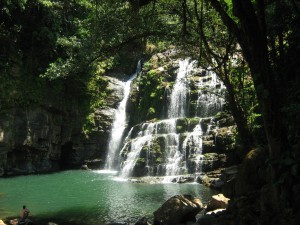
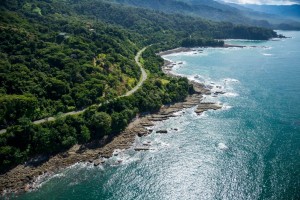
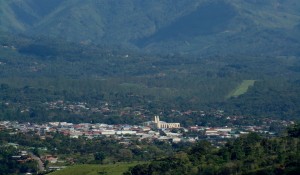
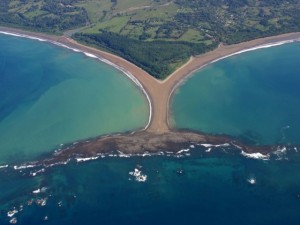
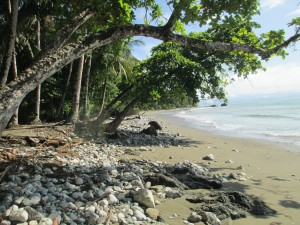
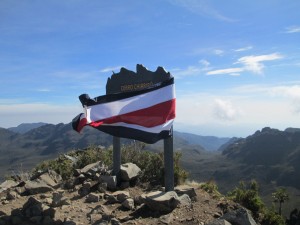
[…] in the southern zone of Costa Rica things are a bit different, to put it mildly. People here just amble about slowly, […]